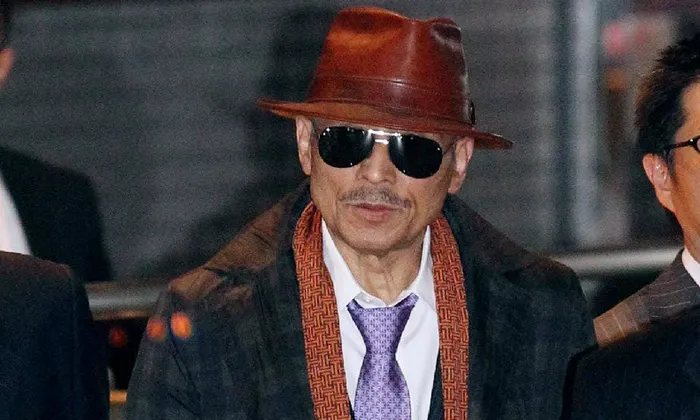Kenichi Shinoda, commonly referred to as “Shinobu Tsukasa,” is the current Yakuza boss of the Yamaguchi-gumi, the Japan’s largest and most notorious yakuza syndicate in Japan. He has maintained his positionas the leader of the influential Japanese criminal organization for almost 20 years.

Despite his notoriety, not much is known about Kenichi Shinoda himself as he has remained elusive to the public eye. In this article, we will explore who Kenichi Shinoda is, what his life was liek, and how he became the most powerful yakuza boss in Japan.
Early Life
Kenichi Shinoda was born in the city of Oita in Japan on January 25, 1942. He graduated from from Oita Prefectural Fisheries High School and got a job at a local fishery company. In 1962, he went to Nagoya city via Osaka and joined the third Yamguchi, also known as Hirota-gumi
Shinoda rose to fame as a quick-witted and charismatic member of the Yamaguchi-gumi. Shinoda joined during his early twenties and promptly climbed up the ranks through his unparalleled ability to make money
By the late 1970s, Yamaguchi-gumi’s then-boss, Kazuo Taoka had entrusted him to manage Aizu Kotetsu-kai- his personal gang. Shinoda grew Aizu Kotetsu-kai into one of western Japan’s most robust mob groups by enforcing stringent rules and efficient business acumen in their illegal interests comprising real estate and construction.
He was active in the martial arts division and served as the top executive of the Hirota-gumi during the conflict in Chukyo district. Shinoda later established Tsukasa Kogyo as his own organization alongside Kiyoshi Takayama in 1984.
Shinoda and his partner Takayama led the Kodo-kai to be a thriving arm of the Yamaguchi-Gumi, spreading their influence to 18 different prefectures. Notably, they even expanded into the Kantō region, an area that was not typically under the control of Yamaguchi-Gumi.
Criminal Activities
Shinoda faced several controversies before he rose to power within the Yamaguchi-gumi. He was sentenced to 13 years in prison for murdering a rival Yakuza boss with a Katana Yamaguchi-gumi’s numerous historic yakuza wars, viewed as demonstration of Sidona’s allegiance and resulting in his promotion to Yamaguchi-gumi, enhancing his reputation further within the Yakuza fraternity.
How he became the Yakuza Boss?
Kenichi Shinoda became the sixth boss of the Yamaguchi-gumi after the retirement of Yoshinori Watanabe, the previous Yakuza boss of 40,000 member strong organizaiton. He is the first boss of Yamaguchi-gumi who is not native to the Kansai region.
He avoids portraying himself as the “supreme Godfather,” at least in public. When he became kumicho, he opted to take the train to his induction ceremony instead of a chauffeured limousine. Additionally, he made a stop at a small street-side ramen noodle restaurant on his way to the extravagant yakuza banquet organized in his honor.
Just four months after taking command of Yamaguchi-gumi, Kenichi Shinoda was handed a six year prison sentence for violating the Japanese firearm and sword laws.
Keeping the prison sentence in mind, he created the “executive” position, which is the highest-ranking executive, and restored the Kuramoto-gumi andthe Konishi family, bringing the Kokusokai under the umbrella of Yamaguchi-gumi. He also improved relations with the fifth genration chairman Sakei of Aizu Kotetsukai.
His appeal in the court was dismissed on November 29, following which he turned himsel in and got imprisoned at the Osaka Detention Center. The following year, he was transferred to the Fuchu Prison in Fuchu, Japan.
Conclusion
Shinoda’s reputation within and outside Japan was of notoriety as Yamaguchi-gumi’s boss. However, his influence is diminishing due to increased government efforts to halt organized crime, imposing elevated charges for crimes related to yakuza activity. With that, Sidona and other yakuza members strive to keep a low profile and away from the public radar.
In conclusion, Kenichi Shinoda’s reign as the leader of Yamaguchi-gumi has bee a mixed bag, leading one of Japan’s competent yakuza groups while amassing considerable power and wealth but facing a grim future due to demographic issues. 10% of Yakuza members are over the age of 70, while about 50% are over 50. The yakuza’s ability to lure young men with promises of quick cash is increasingly challenged by more than ten years of law enforcement actions against major gangs and economic instability.
Also Read: Japanese Yakuza Ranks: Names Of Yakuza Member Ranks In Order
